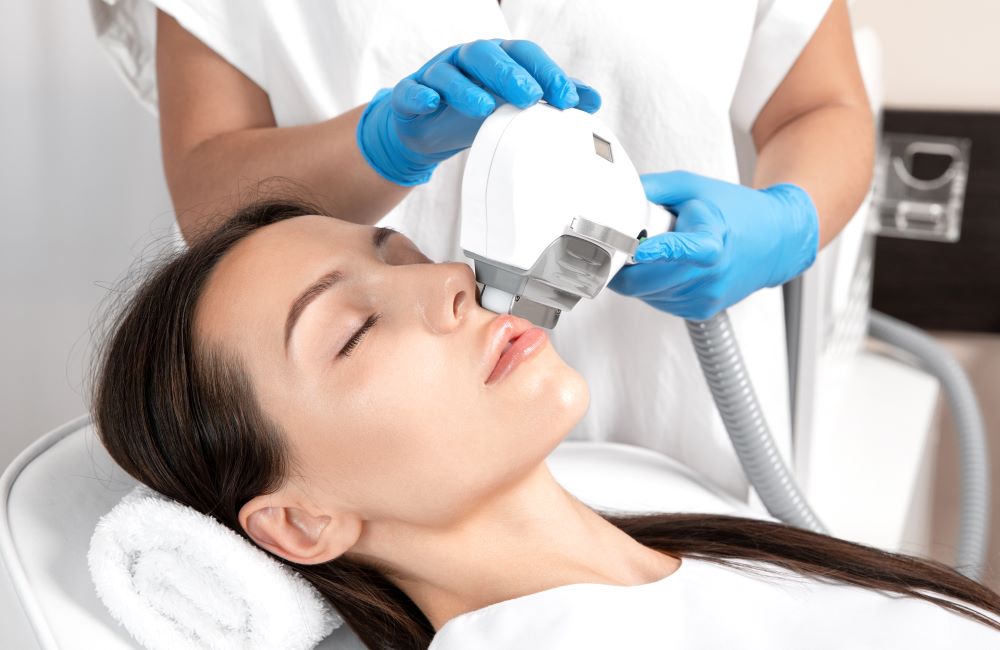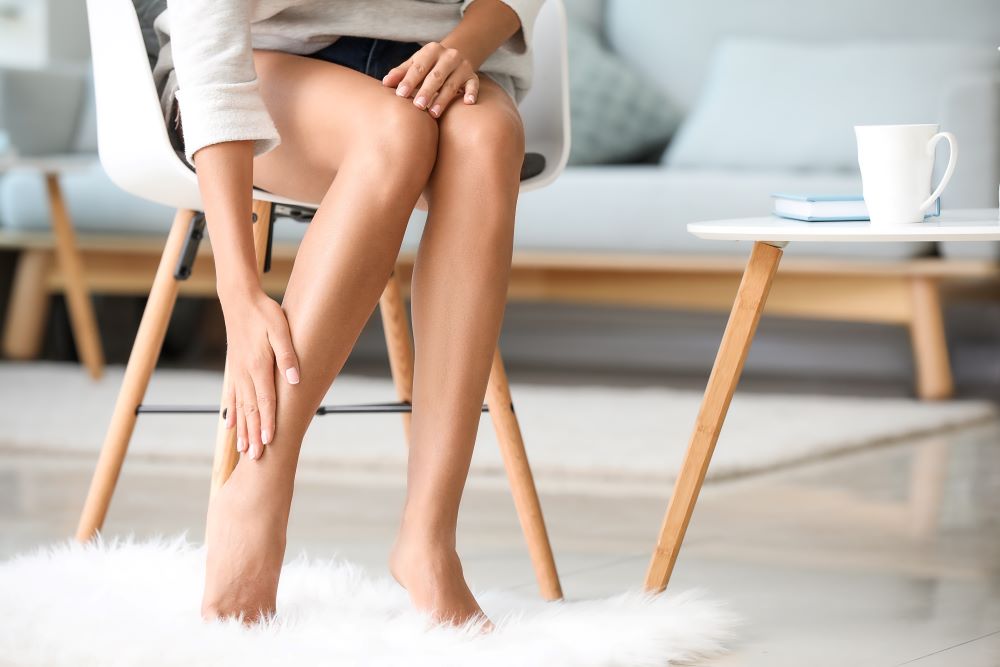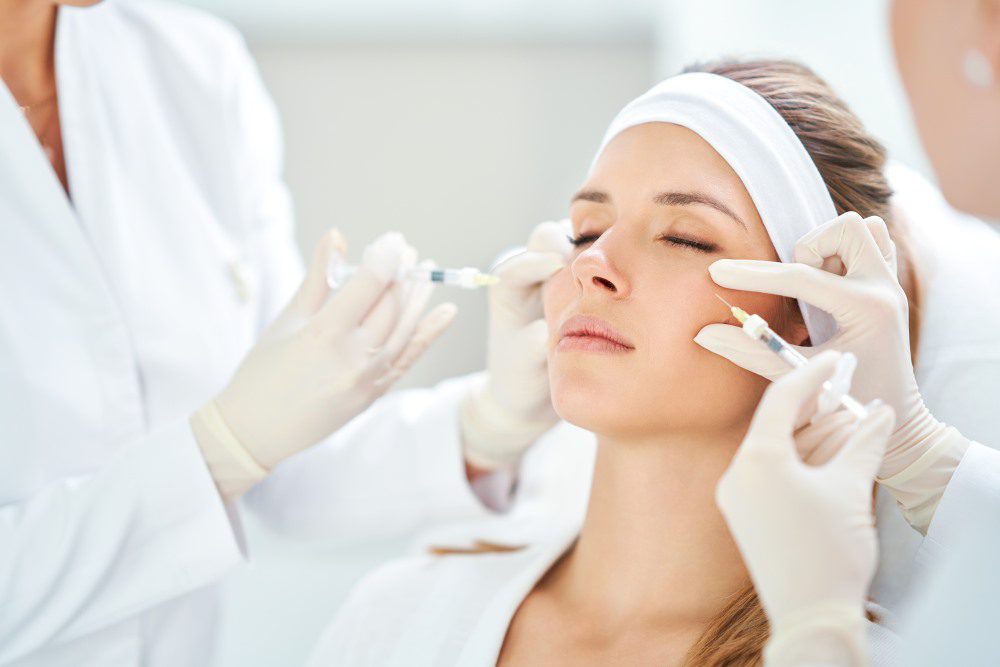Botulinum toxin, commonly known as Botox, is a neurotoxic protein produced by the bacterium Clostridium botulinum. Since its discovery in the 1970s, Botox has revolutionized both cosmetic and therapeutic medicine. Initially used for its ability to address eye muscle problems, Botox was used to reduce the appearance of facial dynamic lines and wrinkles. More recently, the use of Botox has expanded to treat a variety of other medical conditions, ranging from chronic migraines to excessive sweating and muscle spasms.
The widespread use of Botox injections underscores its efficacy and favorable safety profile in the short term. However, as with any medical intervention, understanding the long-term effects of Botox is crucial for ensuring the continued well-being of patients. While immediate benefits such as smoother skin and temporary relief from muscle spasms are well-documented, the lasting impacts of repeated Botox injections are still being investigated.
Exploring the long-term effects of Botox is not only essential from a medical standpoint but also from an ethical perspective. Patients and practitioners alike must have a comprehensive understanding of the potential risks and benefits associated with prolonged Botox use. Moreover, as Botox continues to gain popularity and diversify its applications, addressing concerns about its long-term effects becomes increasingly important.
We’ll examine the long-term effects of Botox, highlighting areas that warrant further investigation.
Mechanism of Action of Botox
Cellular Mechanism and Long-Term Persistence
Botulinum toxin, the active ingredient in Botox, disrupts the release of acetylcholine, a neurotransmitter essential for muscle contraction, by blocking the release of synaptic vesicles containing acetylcholine from nerve endings. While the immediate effect of Botox is temporary muscle paralysis or relaxation, recent research suggests that the cellular changes induced by repeated injections may have longer-term implications.
Studies indicate that Botox can lead to alterations in muscle composition, function, and gene expression, which may persist beyond the typical duration of its therapeutic effects, potentially impacting muscle physiology in the long term.
Long-Term Effects in Cosmetic and Therapeutic Contexts
In the realm of cosmetic medicine, the sustained use of Botox for wrinkle reduction raises questions about its cumulative effects on facial muscles and skin integrity over time. While short-term benefits, such as smoother skin and diminished wrinkles, are well-documented, the possibility of prolonged muscle weakness or atrophy following repeated injections warrants consideration. Similarly, in therapeutic applications, particularly in the management of muscle spasticity or dystonia, the long-term consequences of muscle relaxation induced by Botox remain a subject of ongoing research. Some studies suggest that chronic Botox administration may alter muscle architecture and contractile properties, potentially influencing functional outcomes and treatment efficacy in the long run.
Clinical Implications and Future Studies
Understanding the long-term effects of Botox is crucial for optimizing patient care and treatment strategies. Clinicians must weigh the immediate benefits of Botox against potential risks and consequences associated with prolonged use. Studies with extended follow-up periods are needed to determine the persistence and clinical significance of Botox-induced changes in muscle physiology and function.
Positive Long-Term Effects of Botox Use
Botox injections have demonstrated remarkable efficacy in reducing the appearance of facial wrinkles and fine lines, with effects lasting beyond the typical duration of muscle paralysis. Studies have revealed that repeated Botox treatments can lead to sustained improvements in skin texture and tone, resulting in a more youthful and rejuvenated appearance. The gradual softening of dynamic wrinkles, such as crow’s feet and forehead lines, persists over time, contributing to enhanced patient satisfaction and confidence in their appearance. Furthermore, recent research suggests that the cumulative effects of Botox may extend beyond the injected areas, with some individuals experiencing broader improvements in skin elasticity and smoothness. These enduring cosmetic benefits underscore the value of Botox as a long-term solution for combating signs of aging and maintaining youthful aesthetics.
Therapeutic Benefits: Chronic Conditions Treatment and Quality of Life Enhancement
In addition to its cosmetic applications, Botox offers substantial therapeutic benefits in the management of chronic medical conditions, including migraine headaches, muscle spasticity, hyperhidrosis, and dystonia. Long-term studies have demonstrated the sustained efficacy of Botox in reducing the frequency and severity of migraines, providing patients with prolonged relief from debilitating symptoms, and improving their overall quality of life. Similarly, individuals with muscle spasticity or dystonia have experienced lasting improvements in mobility, functional abilities, and pain management following repeated Botox injections. By targeting the underlying mechanisms of these conditions, Botox therapy offers a long-term solution for symptom control and disease management.
Psychological Well-Being and Social Perceptions
Beyond its physical benefits, Botox has been shown to positively impact psychological well-being and social perceptions, contributing to enhanced self-esteem, confidence, and social integration. Studies have documented improvements in self-image and body satisfaction among individuals undergoing regular Botox treatments, leading to greater overall happiness. Moreover, the visible reduction in facial wrinkles and expression lines can mitigate feelings of self-consciousness and insecurity, empowering individuals to present themselves more confidently in social and professional settings. As a result, Botox therapy not only rejuvenates the outward appearance but also fosters positive psychological outcomes, promoting mental health and emotional well-being in the long term.
Negative Long-Term Effects of Botox Use
Adverse Reactions: Rare but Significant Side Effects
While Botox is generally considered safe when administered by qualified healthcare professionals, rare but serious adverse reactions can occur, particularly with repeated or high-dose injections. These adverse effects can include allergic reactions, such as localized swelling, itching, or rash, as well as systemic reactions, such as flu-like symptoms or respiratory difficulties. There have also been isolated reports of more severe complications, such as muscle weakness or paralysis, speech difficulties, and vision problems, which can significantly impact patient health and well-being. Although such adverse reactions are rare, their potential occurrence underscores the importance of thorough patient assessment, proper injection technique, and vigilant monitoring to mitigate risks associated with Botox therapy.
Changes in Muscle Composition and Function Over Time with Repeated Injections
Emerging evidence suggests that repeated Botox injections may induce structural and functional changes not only in treated muscles but also in the overlying skin. Prolonged muscle paralysis or atrophy following repeated Botox treatments can lead to alterations in muscle architecture, including muscle fiber composition and ability to contract. These changes may manifest as muscle weakness, stiffness, or disuse atrophy, particularly in individuals undergoing prolonged Botox therapy for cosmetic or therapeutic purposes.
Moreover, in addition to muscle changes, Botox injections may also impact the texture and composition of the skin. Some studies suggest prolonged Botox use may lead to skin thinning, reduced collagen production, and alterations in elastin fibers, potentially resulting in diminished skin elasticity, firmness, and resilience. Furthermore, concerns have been raised regarding the potential impact of Botox-induced skin changes on overall skin health, including increased susceptibility to sun damage, dehydration, and premature aging. These observations underscore the need for comprehensive assessments and targeted interventions to address potential adverse effects on both muscle and skin health associated with prolonged Botox use.
The Need for Further Research on the Permanence of These Changes
Despite advancements in our understanding of Botox’s mechanism of action and short-term effects, gaps remain in our knowledge regarding the long-term consequences of repeated Botox injections, particularly on muscle and skin health. There is a critical need for robust studies to investigate the permanence of Botox-induced changes in muscle composition, skin texture, and skin composition, as well as their clinical implications over time. By identifying the persistence and magnitude of these changes, researchers can better inform clinical decision-making, refine treatment protocols, and develop strategies to mitigate potential adverse outcomes associated with prolonged Botox use.
Moreover, such research is essential for enhancing patient safety, optimizing treatment outcomes, and advancing our understanding of the long-term effects of Botox therapy in both cosmetic and therapeutic contexts.
Botox in Different Demographics
Long-term outcomes of Botox treatment may vary significantly between different demographic groups, including variations based on age, gender, and ethnicity. Age-related differences in response to Botox therapy are well-documented, with older individuals often experiencing slower metabolism and elimination of the toxin, potentially leading to prolonged effects and increased risk of adverse reactions. Conversely, younger patients may exhibit more rapid recovery and shorter duration of action, necessitating closer monitoring and adjustment of treatment intervals.
Gender disparities in Botox response have also been observed, with some studies suggesting that women may experience greater efficacy and longer-lasting effects compared to men. However, hormonal fluctuations and differences in muscle mass and facial anatomy between genders can influence treatment outcomes and longevity, highlighting the importance of personalized treatment approaches tailored to individual patient characteristics.
Ethnicity is another factor that can influence the long-term effects of Botox treatment, as variations in skin thickness, pigmentation, and collagen composition may impact toxin diffusion, efficacy, and duration of action. For example, individuals with darker skin tones may require higher doses of Botox or more frequent treatments to achieve comparable results due to differences in skin physiology and response to neurotoxin.
Considerations for Treatment Protocols and Dosages
In light of the demographic variability in Botox response, clinicians must carefully consider patient-specific factors when developing treatment protocols and determining optimal dosages. Tailoring treatment regimens to accommodate age-related changes in metabolism, gender-specific differences in muscle dynamics, and ethnic-specific variations in skin physiology is essential for optimizing treatment outcomes and minimizing the risk of adverse effects.
Furthermore, long-term considerations should inform treatment decisions, with an emphasis on maintaining natural facial expressions and preserving facial harmony over time. Conservative dosing and gradual adjustments may be advisable to prevent overtreatment and minimize the risk of undesirable outcomes, such as facial asymmetry or expression paralysis, which can become more pronounced with repeated injections.
Regular reassessment and communication with patients are crucial for monitoring treatment efficacy, addressing concerns, and modifying treatment plans as needed to achieve optimal long-term results. By taking into account demographic differences and incorporating long-term considerations into treatment planning, clinicians can ensure the safe and effective use of Botox across diverse patient populations, promoting satisfaction and confidence in the outcomes of Botox therapy over time.
Regulatory and Ethical Considerations
The long-term use of Botox in cosmetic and therapeutic settings is subject to regulatory oversight by agencies such as the U.S. Food and Drug Administration (FDA) and international regulatory bodies. FDA guidelines outline the approved indications, dosages, and administration techniques for Botox to ensure patient safety and efficacy. While Botox is FDA-approved for various medical conditions, including chronic migraines, muscle spasticity, and cervical dystonia, its cosmetic use is regulated for specific uses, such as the temporary improvement of moderate to severe frown lines and crow’s feet.
International regulatory standards may vary slightly, but they generally align with FDA guidelines in terms of safety and efficacy requirements for Botox use. However, differences in approval processes, labeling requirements, and usage oversight may exist across countries, necessitating careful consideration of regional regulations when prescribing or administering Botox treatments.
Ethical Implications of Cosmetic Versus Therapeutic Use
The long-term use of Botox raises ethical considerations related to its cosmetic versus therapeutic applications. While therapeutic use is typically justified by the need to alleviate symptoms and improve patient quality of life, cosmetic use is often perceived as elective and driven by aesthetic concerns. Ethical debates surrounding cosmetic Botox focus on issues such as patient autonomy, social pressures to conform to beauty standards, and the commercialization of appearance-enhancing procedures.
The long-term consequences of cosmetic Botox use, including potential alterations in facial expression and perceptions of natural beauty, also raise ethical questions about the balance between enhancing physical appearance and preserving individual identity. Critics have argued that excessive reliance on Botox for cosmetic purposes may contribute to unrealistic beauty goals, body dissatisfaction, and psychological distress, particularly among vulnerable populations such as adolescents and young adults.
In contrast, therapeutic Botox use is often viewed as a medical necessity aimed at improving clinical outcomes and alleviating suffering in individuals with debilitating medical conditions. Ethical considerations in therapeutic Botox use revolve around equitable access to treatment, informed consent, and the ethical responsibility of healthcare providers to prioritize patient well-being and autonomy.
Overall, navigating the ethical landscape of long-term Botox use requires careful consideration of regulatory guidelines, patient preferences, and social values. Balancing the potential benefits and risks of Botox therapy, both cosmetically and therapeutically, is essential for upholding ethical principles and promoting patient-centered care over the course of long-term treatment.
If you’re curious about the long-term effects of Botox and how it may impact your skin health or overall well-being, don’t hesitate to reach out to Your Laser Skin Care. Whether considering Botox for cosmetic reasons or seeking relief from medical conditions, our expert team can provide guidance tailored to your needs. Take the next step towards informed decision-making and contact Your Laser Skin Care today!








